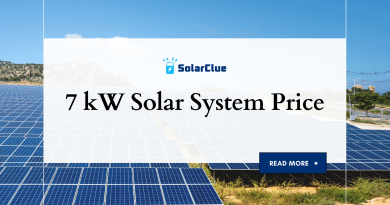How To Use Solar Panels?
Solar energy is becoming an increasingly popular choice for homeowners and businesses looking to reduce their carbon footprint and save on energy costs. This beginner’s guide to using solar panels provides a comprehensive overview of solar panel types, system components, installation processes, and maintenance tips. By understanding these key elements, you can make informed decisions about harnessing the power of the sun for your energy needs.
Table of Contents
Types of Solar Panels
Monocrystalline Solar Panels
Monocrystalline panels are known for their high efficiency and long lifespan. Made from a single crystal structure, they are typically more expensive but offer the best performance in terms of energy conversion.
Polycrystalline Solar Panels
Polycrystalline panels are made from multiple crystal structures, making them less efficient than monocrystalline panels. However, they are more cost-effective and still provide reliable performance.
Thin-Film Solar Panels
Thin-film panels are made by depositing photovoltaic material onto a substrate. They are lightweight and flexible, making them ideal for certain applications. However, they are generally less efficient and have a shorter lifespan compared to crystalline panels.
Solar Panel System Components
Photovoltaic (PV) Panels
PV panels are the primary component that converts sunlight into electricity. They are available in various types, as discussed above.
Inverters
Inverters convert the direct current (DC) produced by the PV panels into alternating current (AC), which can be used by household appliances. There are three main types of inverters: string inverters, microinverters, and power optimizers.
Mounting Systems
Mounting systems secure the solar panels to your roof or the ground. They are designed to withstand various weather conditions and ensure optimal panel positioning.
Battery Storage
Battery storage systems allow you to store excess energy generated by your solar panels for use when the sun is not shining. This is particularly useful for off-grid and hybrid systems.
Monitoring Systems
Monitoring systems track the performance of your solar panel system, providing real-time data on energy production and system health.
Solar Panel Installation Process
Site Assessment
The first step in installing a solar panel system is to assess your site. This involves evaluating your roof’s condition, orientation, and shading to determine the best placement for the panels.
System Design
Based on the site assessment, a customized system design is created. This includes selecting the appropriate components and designing the layout of the panels.
Permitting and Approvals
Before installation can begin, you must obtain the necessary permits and approvals from your local government and utility company.
Installation Steps
1. Mounting System Installation: Secure the mounting system to your roof or ground.
2. Panel Installation: Attach the solar panels to the mounting system.
3. Electrical Wiring: Connect the panels to the inverter and then to your home’s electrical system.
4. System Testing: Ensure the system is functioning correctly and safely.
Solar Panel Maintenance Tips
Regular Cleaning
Keep your solar panels clean to ensure maximum efficiency. Dust, debris, and bird droppings can reduce the panels’ ability to absorb sunlight.
Inspection and Repairs
Regularly inspect your solar panel system for any signs of damage or wear. Promptly address any issues to maintain optimal performance.
Monitoring Performance
Use monitoring systems to track the performance of your solar panel system. This helps you identify any potential problems early and ensure your system is operating efficiently.
Pros and Cons of Different Solar Panel System Setups
| System Type | Pros | Cons |
| Grid-Tied | Lower initial cost, net metering benefits, reliable energy supply | Dependent on the grid, no power during outages |
| Off-Grid | Complete energy independence, no utility bills | Higher initial cost, requires battery storage, complex setup |
| Hybrid | Combines grid-tied and off-grid benefits, power during outages | Higher cost, complex system design and installation |
Conclusion
Harnessing the power of the sun through solar panels is an excellent way to reduce energy costs and contribute to a sustainable future. By understanding the different types of solar panels, system components, installation processes, and maintenance tips, you can make informed decisions about using solar energy.
If you are the one who is planning for the solar power system. Don’t hesitate to contact our team!
Looking forward to empowering you with solar energy, just like hundreds of our other clients!
FAQs
Q1: How do solar panels work?
A: Solar panels convert sunlight into electricity using photovoltaic cells, which generate direct current (DC) that is then converted to alternating current (AC) by an inverter.
Q2: How long do solar panels last?
A: Most solar panels have a lifespan of 25-30 years, but their efficiency may decrease slightly over time.
Q3: Can solar panels work during a power outage?
A: Grid-tied systems will not work during a power outage unless combined with a battery storage system. Off-grid and hybrid systems can provide power during outages.
Q4: What is net metering?
A: Net metering allows homeowners to sell excess energy produced by their solar panels back to the grid, often resulting in a credit on their electricity bill.
Q5: How much does it cost to install solar panels?
A: The cost varies based on system size, type, and location, but the average cost for residential solar panel installation.



